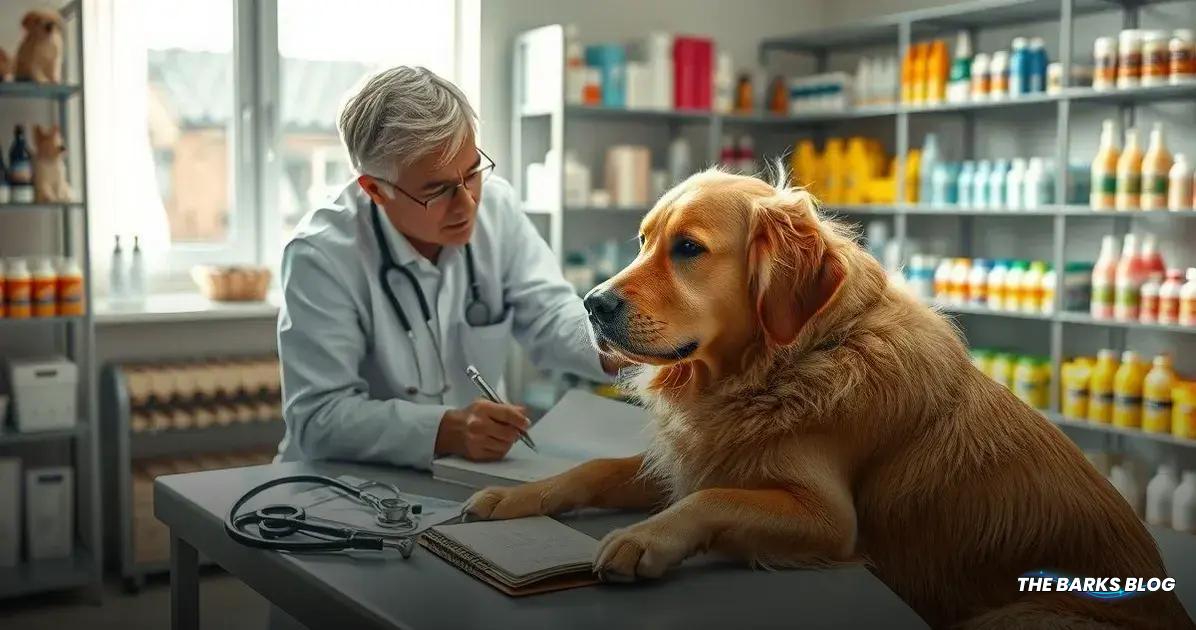It’s normal to see your dog scratching occasionally, but constant scratching can indicate discomfort. Understanding the common causes of dog scratching is essential for their well-being.

Common Places Dogs Scratch
When dogs start scratching excessively, it’s crucial to pay attention to where they’re scratching. This can provide essential clues about the underlying issues causing their discomfort. Here are some common areas where dogs tend to scratch:
- Ears: Frequent scratching or shaking of the head can indicate irritation in the ear canal. Conditions like ear infections or ear mites are common culprits.
- Face and Muzzle: If your dog is rubbing their face or pawing at their muzzle, it may suggest skin irritation or allergies, especially in breeds with skin folds.
- Belly and Underarms: These areas are often more sensitive due to less fur, making them prone to allergens and irritation. Scratching here can indicate contact dermatitis or infections.
- Back: Scratching along the back may be linked to flea infestations or dry skin. It’s essential to check for signs of fleas or other irritants.
- Tail (near the base): Scratching at the tail base can point to flea allergies or skin infections. Keep an eye out for excessive licking or biting in this area.
- Hindquarters: If your dog is scratching their hindquarters, it could be due to anal gland issues or irritation from fecal matter. Regular grooming can help prevent discomfort.
By observing where your dog is scratching, you can better identify potential causes and seek appropriate treatment to alleviate their discomfort.

14 Reasons for Constant Scratching
Identifying the reasons behind your dog’s constant scratching can be crucial in addressing their discomfort. Here are 14 common causes that may lead to excessive scratching:
- Ear Infections: Frequent scratching of the ears can indicate infections caused by bacteria, yeast, or ear mites.
- Allergies: Dogs may suffer from food or environmental allergies, leading to persistent itching and scratching.
- Flea Allergy Dermatitis (FAD): Even a single flea bite can trigger severe itching in sensitive dogs, especially around the tail and hindquarters.
- Dry Skin: Low humidity or inadequate fatty acids in the diet can result in dry, flaky skin, causing discomfort and scratching.
- Contact Dermatitis: Exposure to irritants like grass, detergents, or cleaning products can lead to localized itching and inflammation.
- Bacterial Infections: Scratching can cause small wounds that may become infected, leading to painful bumps or sores on the skin.
- Yeast Infections: Overgrowth of yeast in warm, moist areas, such as the ears or skin folds, can cause intense itching and irritation.
- Mange: Sarcoptic or demodectic mange caused by mites can lead to severe itching and hair loss, particularly in puppies or immunocompromised dogs.
- Skin Fold Dermatitis: Breeds with wrinkles may develop infections in their skin folds, causing redness and itching.
- Hot Spots: These painful, inflamed areas develop when a dog licks or scratches excessively, often due to allergies or moisture.
- Hormonal Imbalances: Conditions like hypothyroidism can affect skin health, leading to dryness and recurrent infections.
- Food Allergies: Certain proteins in dog food can trigger itching, particularly around the face, ears, and paws.
- Environmental Allergens: Pollens, dust mites, and mold can cause seasonal allergies, leading to intermittent itching.
- Anal Gland Issues: Impacted or infected anal glands can lead to discomfort and scratching around the hindquarters.
Understanding these potential causes can help you take the necessary steps to alleviate your dog’s discomfort and improve their quality of life.

How to Help Your Dog with Scratching
If your dog is constantly scratching, there are several proactive steps you can take to help alleviate their discomfort. Here’s how to support your furry friend:
Check Their Diet
- Ensure your dog is on a high-quality, nutrient-dense diet to promote healthy skin and coat.
- If you suspect food allergies, consider switching to a hypoallergenic diet or one formulated for sensitive skin and stomach.
- Keep your dog hydrated, as dehydration can lead to dry, flaky skin.
Keep Up with Parasite Prevention
- Maintain a veterinarian-approved flea and parasite prevention plan year-round.
- Regularly wash your dog’s bedding and vacuum your home to minimize flea exposure.
- Check your dog for flea “dirt” or small black specks, especially if they are scratching at their hindquarters.
Give Them a Bath – But Not Too Often
- Use a gentle, dog-specific shampoo to soothe itchy skin and remove allergens.
- Bathe your dog as needed, based on their breed and coat type; overbathing can strip natural oils.
- After bathing, thoroughly dry their ears, paws, and skin folds to prevent moisture buildup.
Manage Their Environment
- Regularly wash bedding and soft surfaces to remove dust mites and allergens.
- Avoid using harsh cleaning products and air fresheners that can irritate your dog’s skin.
- Wipe your dog’s paws and belly after walks to remove pollen and other irritants.
- Minimize exposure to pesticides and fertilizers, as these can cause skin irritation.
Try Over-the-Counter Anti-Itch Sprays
- For mild itching, consider using anti-itch sprays containing soothing ingredients like aloe vera or colloidal oatmeal.
- Follow the recommended usage guidelines, and consult your veterinarian if itching persists.
Support Their Skin From the Inside Out
- Ensure your dog’s diet is balanced to maintain a healthy skin barrier.
- Incorporate gut-supportive ingredients into their meals to help manage occasional itching.
- If issues persist, consult your veterinarian for dietary modifications or additional support.
By taking these steps, you can help manage your dog’s scratching and improve their overall comfort. If their condition worsens or does not improve, it’s essential to consult a veterinarian for further evaluation and treatment.

When to See a Veterinarian
While occasional scratching is normal for dogs, there are times when excessive scratching may indicate a more serious issue. It’s important to know when to seek veterinary care. Here are some signs that your dog’s scratching needs professional attention:
Constant or Obsessive Scratching: If your dog is scratching non-stop and it doesn’t improve with home care, it’s time to see a vet.
Red, Inflamed, or Raw Skin: Excessive scratching can lead to open sores or raw patches on the skin, which may require medical treatment.
Open Sores, Scabs, or Bleeding: Any signs of injury from scratching should be evaluated by a veterinarian to prevent infection.
Hair Loss or Bald Patches: If you notice concentrated areas of hair loss, it may indicate a skin condition or infection that needs attention.
Signs of Infection: Look for pus, swelling, or a bad odor, which may indicate a bacterial or yeast infection.
Increased Licking or Chewing: If your dog is excessively licking or chewing their paws, belly, or tail, this behavior may signal an underlying issue.
Head Shaking or Ear Scratching: Frequent head shaking or scratching at the ears, especially with dark discharge or a foul smell, can indicate an ear infection.
If you notice any of these symptoms, it’s best to consult your veterinarian. They can perform the necessary examinations, tests, and treatments to help identify the root cause of your dog’s scratching and provide appropriate care.

Signs That Need Veterinary Care
If your dog is scratching excessively, it’s essential to recognize the signs that indicate a need for veterinary care. Here are specific symptoms to watch for:
- Constant or Obsessive Scratching: If your dog scratches non-stop, it may signal a serious issue that requires professional assessment.
- Red, Inflamed, or Raw Skin: Any signs of redness or inflammation due to scratching should be evaluated to prevent further complications.
- Open Sores, Scabs, or Bleeding: If scratching leads to open wounds or bleeding, immediate veterinary care is necessary to avoid infection.
- Hair Loss or Bald Patches: Noticeable hair loss, particularly in concentrated areas, can indicate an underlying condition that needs medical attention.
- Signs of Infection: Look for pus, swelling, or foul odors, which could indicate a bacterial or yeast infection requiring treatment.
- Increased Licking or Chewing: If your dog is excessively licking or chewing their paws, belly, or tail, this behavior may point to an underlying issue.
- Head Shaking or Ear Scratching: Frequent head shaking or scratching at the ears, especially with dark discharge or a bad smell, can indicate an ear infection.
Recognizing these signs early can help ensure your dog receives the necessary care to address their discomfort and prevent further health issues. If you observe any of these symptoms, it’s best to schedule a visit with your veterinarian as soon as possible.

Medical Treatments for Scratching
When your dog’s scratching becomes excessive and requires veterinary intervention, several medical treatments may be recommended based on the underlying cause. Here are some common treatments your veterinarian might suggest:
Severe Allergies: Treatment may include antihistamines, prescription diets, allergy injections, or long-term anti-itch medications to manage allergic reactions.
Skin Infections: Bacterial or yeast infections often require medicated shampoos, oral antibiotics, or antifungal medications to clear up the infection and soothe the skin.
Mite or Flea Infestations: Your veterinarian may prescribe consistent use of prescription-strength flea preventatives or anti-parasitic medications to eliminate infestations.
Hormonal Imbalances: Conditions like hypothyroidism may require blood tests and hormone replacement therapy to manage the underlying issue affecting your dog’s skin health.
Autoimmune Skin Disorders: These conditions often necessitate long-term management with specialized topical and oral medications to control symptoms and prevent flare-ups.
Topical Treatments: Your vet may recommend medicated creams or sprays to soothe irritated skin and reduce inflammation directly at the site of discomfort.
Dietary Supplements: Omega-3 fatty acids or other supplements may be suggested to improve skin health and reduce inflammation from within.
It’s essential to follow your veterinarian’s recommendations and treatment plan to effectively address your dog’s scratching and ensure their skin returns to a healthy state. Regular follow-ups may also be necessary to monitor your dog’s progress and make any needed adjustments to their treatment.

Final Thoughts on Dog Scratching
Dealing with a dog that keeps scratching can be challenging, but understanding the underlying causes is crucial for effective management. Remember that occasional scratching is normal, but persistent or excessive scratching often indicates discomfort that needs attention.
Identifying the source of your dog’s irritation is the first step in addressing the problem. Regular grooming, a balanced diet, and proper parasite prevention can go a long way in maintaining your dog’s skin health. Additionally, being vigilant about any changes in behavior or skin condition will help you catch potential issues early.
If your dog’s scratching becomes severe or leads to other symptoms, such as hair loss or open sores, don’t hesitate to consult your veterinarian. They can provide a thorough examination and recommend appropriate treatments to ensure your furry friend remains comfortable and healthy.
Ultimately, taking a proactive approach to your dog’s skin health will not only improve their quality of life but also strengthen the bond you share. With the right care and attention, your dog can enjoy a happy, itch-free life!
Conclusion
Understanding the reasons behind your dog’s scratching is essential for their well-being. While occasional scratching is normal, persistent itching can indicate underlying issues that require attention.
By observing your dog’s behavior, maintaining a healthy diet, and ensuring proper parasite prevention, you can significantly improve their skin health.
If you notice any concerning symptoms, such as excessive scratching, open sores, or signs of infection, it’s crucial to consult your veterinarian for a thorough evaluation and appropriate treatment.
With the right care, you can help your furry friend lead a comfortable and happy life, free from discomfort.
FAQ – Frequently Asked Questions about Dog Scratching
What are the common reasons for my dog scratching?
Common reasons for dog scratching include allergies, flea infestations, dry skin, ear infections, and skin infections.
When should I take my dog to the veterinarian for scratching?
You should consult a veterinarian if your dog is scratching constantly, has red or inflamed skin, shows signs of infection, or if scratching leads to hair loss or open sores.
How can I help my dog with their scratching at home?
You can help by ensuring a balanced diet, maintaining regular grooming, using parasite prevention, and keeping their environment clean and free of irritants.
What treatments might a veterinarian recommend for my dog’s scratching?
Veterinarians may recommend antihistamines for allergies, medicated shampoos for infections, or specific dietary changes to address sensitivities.
Are there any over-the-counter products I can use for my dog’s itching?
Yes, there are over-the-counter anti-itch sprays and shampoos available that contain soothing ingredients like aloe vera or oatmeal.
Can dry skin cause my dog to scratch?
Absolutely! Dry skin can lead to itching and scratching, especially during dry or cold weather, so it’s important to keep your dog hydrated and consider dietary supplements.




